Did you know a single night of harsh frost can set your fruit tree or young tree back by years—even killing them outright? Over 50% of winter tree losses are preventable with proper insulation methods, yet most backyard trees remain vulnerable each winter. In this comprehensive guide, you'll learn how tree insulation techniques can protect your trees, maintain tree health, and ensure year-round growth, even in freezing temperatures.
Tree Insulation Techniques: Why Winter Damage Can Destroy Fruit Trees and Young Trees
- Every year, thousands of homeowners lose entire groves to unseen frost cracks and bark damage.
- Research has shown that a brief spell of freezing temperatures—even one night below 32°F—can compromise the health of fruit trees and young trees for seasons to come.
- Young and newly planted trees, in particular, are highly sensitive since their bark and vascular systems are less developed and lose water fast in cold weather. Left exposed, trees and shrubs often develop lasting wounds or dieback.
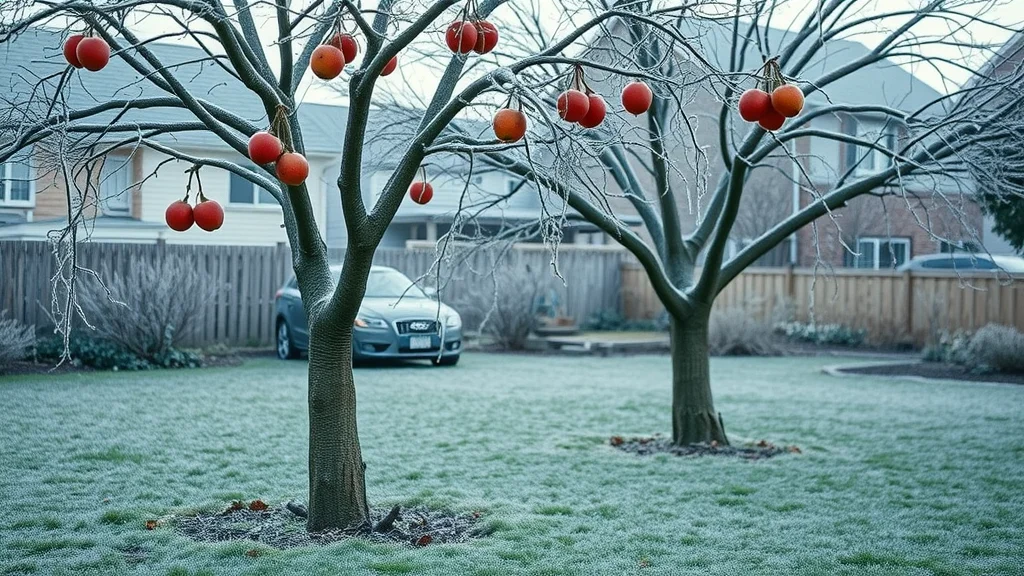
The Science Behind Frost Damage and Freezing Temperatures
Frost damage occurs when the air temperature around your trees drops below the threshold their tissues can tolerate. For many species, especially fruit trees and young trees, this threshold is just below freezing (32°F/0°C). When freezing temperatures hit, water inside the tree’s cells forms ice, rupturing the cell walls and causing tissue death. Unprotected trees often suffer bark splitting, also called frost cracks, and dieback on twigs and branches. Extended periods of cold winter nights can further complicate the situation by causing cumulative root and branch injury, especially when soil temperatures plummet and prevent roots from accessing water, causing trees to lose water rapidly. Understanding these processes is key to applying the right tree insulation techniques that can safeguard your garden from irreversible frost damage.
Moreover, repeated freeze-thaw cycles weaken tree bark, making it susceptible to sunscald and pest infestations come spring. In areas with fluctuating temperatures, applying proper insulation becomes not just a best practice but a necessary step for ensuring long-term tree health. Using burlap wraps and tree guards as insulation methods helps stabilize both air and soil temperatures around sensitive trees, drastically reducing the risk of frost damage and winter kill.
Why Protect Your Trees Is Essential for Tree Health and Longevity
Consistent, proactive protection is the cornerstone of resilient fruit trees, young trees, and established trees and shrubs. Not only does insulation prevent devastating tissue loss, but it also enhances your trees’ ability to photosynthesize and regrow in the spring. Think of tree care as a year-round commitment: what you do in late fall and the tactics you use against harsh winds or sudden drops in temperature directly impact your garden’s beauty and productivity in the coming year. Insulation techniques like mulching, wrapping, and using tree guards are vital to counteract the unpredictable weather and help retain moisture in the root zone, preventing trees from drying out among frosty conditions.
The process of insulating your trees also minimizes the occurrence of diseases that flourish in injured tissue, such as canker and rot. By fostering robust tree health, you not only improve your fruit harvest but also maintain the overall aesthetics and ecological function of your yard. Every step you take today shields your trees from tomorrow’s weather extremes, strengthening their resilience, vitality, and lifespan.
What You’ll Learn About Tree Insulation Techniques
- You’ll gain a clear overview of proven tree insulation techniques and practical steps to minimize winter damage.
- Discover how to protect your fruit trees and young trees from frost damage, and extend the health of your trees and shrubs.
- Understand why your hardiness zone plays a crucial role in choosing the right technique for your landscape.
- Get expert advice, tables, and real-world tips for sustainable tree care and maximum protection throughout the cold season.
Understanding Frost Damage: Impact on Trees and Shrubs
How Frost Damage Affects Fruit Trees, Young Trees, and Trees and Shrubs
Frost damage can cause severe setbacks for fruit trees, young trees, and ornamental trees and shrubs. When freezing temperatures occur, the most susceptible tissue is often the new growth and thin-barked parts of younger trees. This vulnerability stems from underdeveloped bark and vascular systems, meaning young trees lose water faster and cannot recover as well from freezing. Damage manifests as browned or blackened leaves, split bark (frost cracks), wilted growth, and in worst cases, total dieback or death of entire trees.
Established trees and shrubs are not immune, especially if they have late fall growth spurts or were newly planted during the growing season. These trees, if unprotected, suffer from frost cracks, bark blistering, and collapse of root or stem tissue as ice forms and thaws inside. Fruit trees and young trees in particular demand extra vigilance because a single season’s injury can delay fruit production or reduce yields for years. Therefore, using the right insulation method—matched to the plant type—is essential for preventing long-term tree health decline caused by cold winter episodes.
| Type of Tree Damage | Affected Trees | Recommended Insulation Technique |
|---|---|---|
| Frost cracks on bark | Fruit trees, young trees | Burlap wrap, tree guards |
| Root freeze | Young trees, newly planted trees | Thick mulch layer |
| Leaf and bud burn | Fruit trees, ornamental shrubs | Tree blankets, covers |
| Overall tissue dieback | Trees and shrubs | Combination: mulch, wrap, wind blocks |
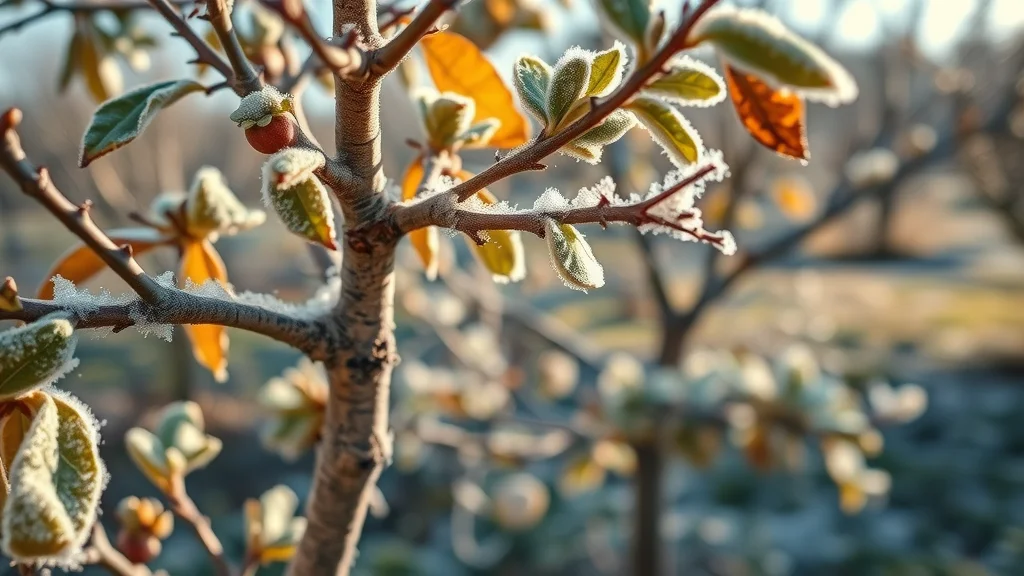
"Freezing temperatures can destroy years of growth in a single night without proper tree insulation techniques." — Arborist Jane W.
Tree Insulation Techniques: Key Principles and Methods
Insulating Fruit Tree and Fruit Trees: Comparing Popular Approaches
- Burlap Wraps: These natural, breathable wraps guard trunks of fruit tree and young tree varieties against abrupt temperature swings and harsh winds. They prevent frost cracks while allowing air to circulate.
- Tree Guards: White plastic or fiber guards reflect winter sun and insulate trunks from direct chilling. Ideal for both young trees and more mature specimens.
- Mulching: Applying a layer of mulch (3-4 inches deep) over moist soil insulates roots, maintaining steady soil temperatures and retaining moisture. This is especially crucial after late fall and before hard freezes hit.
- Shielding Against Freezing Temperatures: Tree blankets, frost blankets, wind baffles (like strategically placed burlap or temporary boards), and DIY solutions with chicken wire and leaves are effective. These methods buffer trees from icy winds and sudden drops in air temperature.
Each method addresses a specific vulnerability in fruit trees. A tailored approach—combining wraps, mulch, and guards—often yields the best protection, especially for orchards or gardens with various tree ages and species. Adapting to your local climate and tree type remains the key to maximizing effectiveness and safeguarding your investment in tree care.
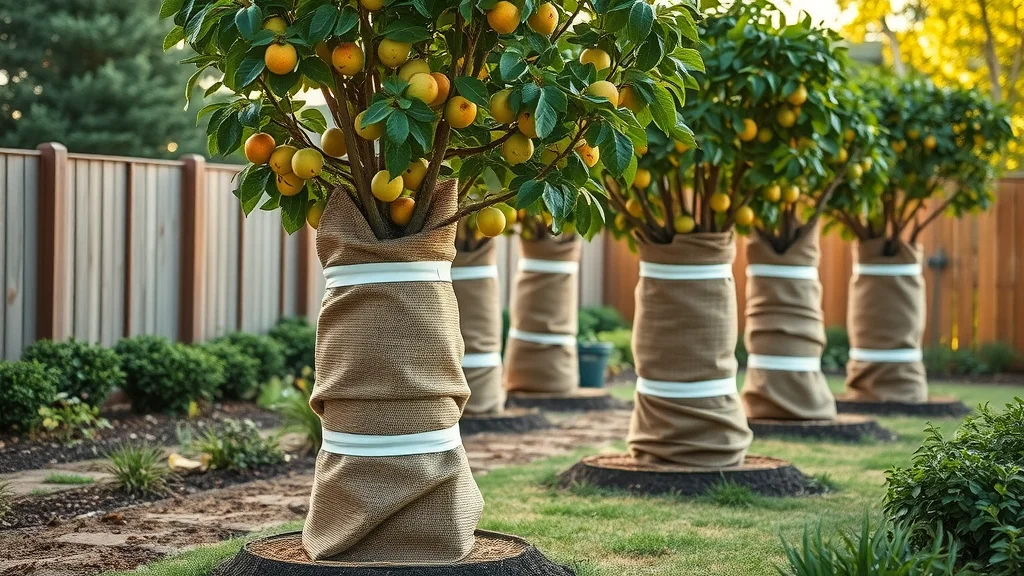
Tailoring Insulation for Young Trees and Young Tree Protection
Young trees are particularly sensitive to cold weather. Their thin, tender bark and underdeveloped root systems mean they dry out and freeze much faster than mature trees, especially during rapid temperature swings in late fall or early winter sun. For young tree protection, select flexible wraps that won’t cut into the bark, such as burlap or specialized tree wrap. Always secure insulation just above the soil line to the lowest branches, providing a continuous barrier against frost cracks and dehydrating winds. Mulch serves double duty for young trees: it regulates soil temperature and helps them retain moisture during winter thaws and freezes. Look for organic mulch that promotes soil health and decomposes slowly for season-long protection.
Many professionals recommend supplementing tree wrap with protective tree guards, especially in areas with repeated freezing temperatures and snow. If you’re caring for a mix of fruit tree saplings and other young landscape additions, custom-tailored insulation methods—adapted to the species and expected cold—are non-negotiable if you want robust growth and strong recovery come spring.
"Cold weather is especially harsh on young trees—proper insulation is non-negotiable." — Horticulturist Alex F.
Adjusting Tree Insulation Techniques by Hardiness Zone
- Your hardiness zone determines which insulation methods are most effective. In milder zones, a simple burlap wrap may suffice, whereas colder regions might demand multiple layers of insulation and even heat sources for sensitive varieties like some fruit trees.
- Reference your local hardiness map before winter, and plan insulation in early to mid-fall based on predicted air and soil temperatures.
- Always prioritize the most vulnerable trees (newly planted, young tree, fruit trees) and those outside their ideal hardiness zone. Extreme cold weather patterns, like polar vortexes, may require adding wind blocks or frost blankets to your tree care routine.
Adjusting your insulation method as your local climate shifts ensures ongoing tree health, reduces winter kill, and improves fruit yields. Regularly inspect your protection throughout winter, upgrading or doubling insulation during cold snaps to maximize results.
Step-by-Step Guide: How to Insulate a Tree for Freezing Temperatures
How to Insulate a Tree? Essential Steps for Tree Care
- Assess tree species and risk: Identify which trees in your yard are most vulnerable—pay special attention to fruit trees and newly planted or young trees. Note their positioning and exposure to prevailing winds or winter sun.
- Choose insulation material: Select between burlap, tree guards, mulch, or a combination depending on your local climate and tree type. Consider using chicken wire filled with leaves for large-scale wind protection or frost blankets for sensitive evergreen trees and shrubs.
- Apply wraps or guards: Wrap burlap or specialized tree wrap starting just above the soil line, securing gently and spiraling up to the first branches. For tree guards, position them to reflect sun and prevent frost cracks. Add a 3-4 inch layer of mulch around the drip line, taking care not to mound it against the trunk.
- Secure with proper installation methods: Ensure wraps are snug (not tight), fastened with biodegradable string or self-fastening tree wraps. Inspect for gaps or loose edges that could allow cold air or pests to penetrate. Double-check after storms or temperature swings.
| Material | Effectiveness | Cost | Longevity |
|---|---|---|---|
| Burlap wrap | High for most fruit and young trees | Low | 1-2 seasons (biodegradable) |
| Plastic tree guard | Moderate (great for trunk protection) | Medium | 3-5 years |
| Natural fiber blanket | Excellent for emergency protection | Medium-High | 1-3 seasons |
| Loose mulch | High for root insulation | Low | Annual replenishment |
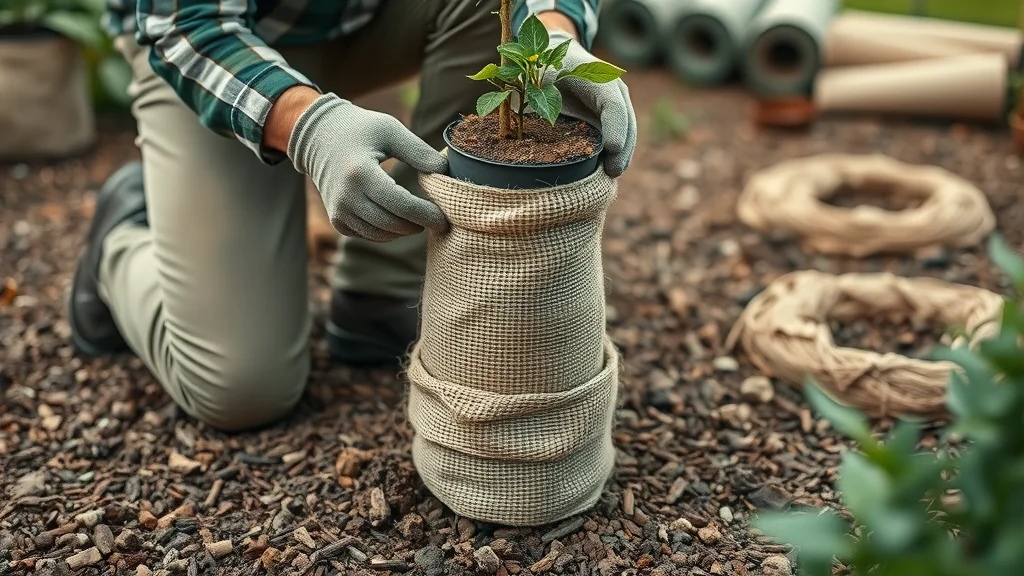
At What Temperature Should I Cover My Trees?
- Most fruit trees and young trees should be covered when forecasts predict air temperatures below 32°F (0°C).
- Tropical or sub-tropical species, or specimens at the edge of their hardiness zone, might need insulation at 40°F (4°C) or lower, especially if an early frost is expected.
- Monitor upcoming weather events and err on the side of caution—adding protection before cold fronts sets in is more effective than reacting afterward.
"Most fruit trees become vulnerable under 32°F; don’t wait until frost damage appears." — Dr. Samuel Tree, Plant Pathologist
Choosing the Best Material to Wrap Trees for Winter
What is the Best Material to Wrap Trees for Winter?
- Burlap: Highly breathable, affordable, and biodegradable. Best for most fruit trees and young trees.
- Plastic Tree Guards: Reflect sunlight, prevent frost cracks, and offer good trunk protection for young trees.
- Natural Fiber Blankets: Provide broad coverage against wind and freezing temperatures, ideal for emergency or temporary use.
Each material has tradeoffs: burlap excels in sustainability and airflow, while plastic guards offer longevity and sturdy protection against physical damage. Fiber blankets supply fast, wide coverage but may not last multiple seasons or allow enough light for slower-growing trees and shrubs. Choose based on your tree species, local climate, and personal preferences for sustainability and ease of use.
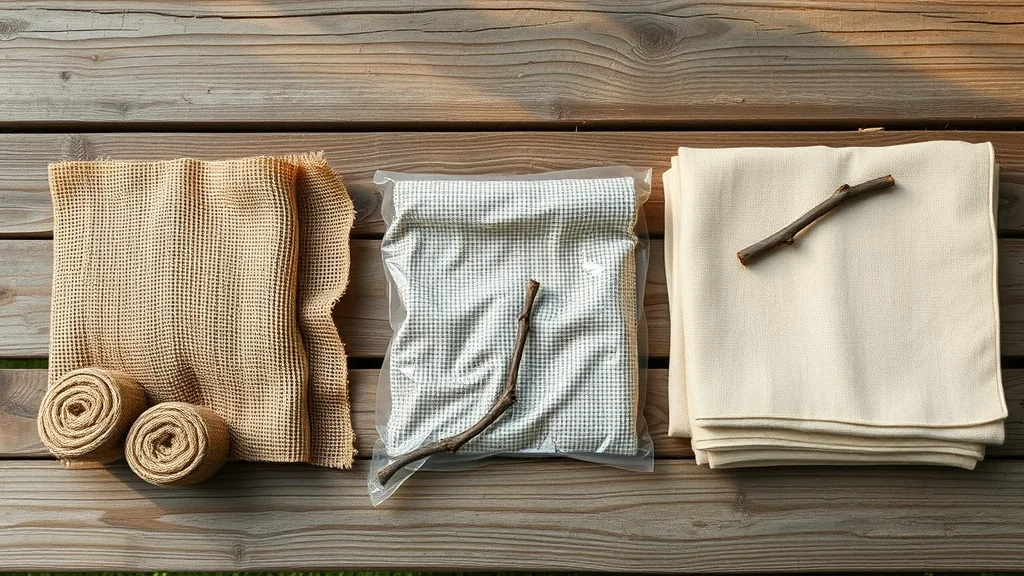
Long-Term Benefits of Quality Tree Insulation Techniques
- Reduced frost damage: Well-insulated trees experience fewer frost cracks and less bark splitting, especially in fruit trees and vulnerable young trunks.
- Enhanced tree health: Consistent insulation improves root vitality, maintains even soil temperatures, and prevents loss of moisture during the winter sun and cold winds.
- Improved fruit yield: Healthy trees recover faster in spring, leading to better blossom set and more abundant, high-quality fruit crops.
Overall, investing in high-quality, well-matched insulation methods means your trees not only survive but thrive through unpredictable winters, ensuring beauty, productivity, and shade for years to come.
Special Considerations: Fruit Trees, Young Trees, and Trees and Shrubs
Why Young Trees and Fruit Trees Need Extra Protection
- Vulnerable tissue: Young trees and fruit trees have less lignified, more water-filled tissue that freezes quickly in low temperatures.
- Underdeveloped bark: Thin bark is easily ruptured by sudden changes between day and nighttime cold.
- Higher impact: Even brief exposure to freezing temperatures can halt growth, delay fruiting, or kill new saplings entirely.
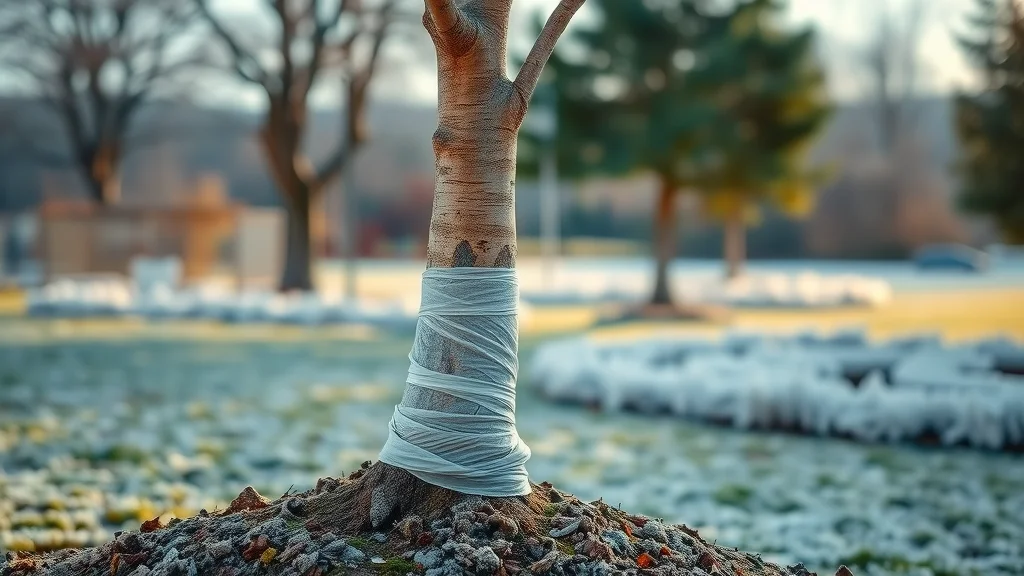
How to Insulate Mature Trees and Shrubs
- Large landscapes and orchards benefit from mulching at the root zone and wind baffles on the upwind side of tree lines.
- Established trees and shrubs may only need insulation on vulnerable graft unions or thinner-barked varieties. Larger trunks can sometimes tolerate more severe drops but benefit from short-term wraps during extreme cold.
Remember to inspect mature trees for past frost damage, as repeated injuries weaken overall tree health and make them more susceptible to pests or disease. Annual mulch, careful pruning, and spot insulation remain important for full-sized trees and shrubs in most gardens.
Tree Insulation Techniques for Extreme Cold Weather Events
Protect Your Trees: Emergency Solutions for Sudden Cold Snaps
- Quick wrap kits: Pre-cut burlap rolls or frost blankets can be rapidly deployed just before severe weather.
- Temporary wind blocks: Use plywood sheets, snow fencing, or stacked straw bales to deflect harsh winds from young trees and fruit trees.
- Heat lamps: For high-value trees (e.g., rare fruit trees in orchards), portable, outdoor-safe heat lamps may be used during extreme dips in temperature (below 15°F/-9°C) to prevent irreversible damage.
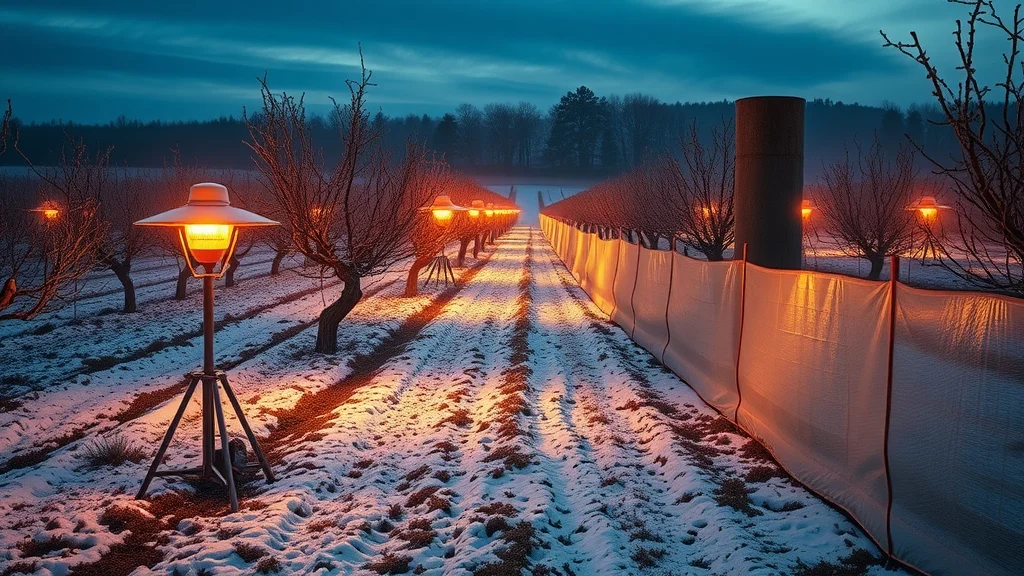
Tree Heal Strategies: Aftercare for Trees After Frost Damage
- Pruning: Remove dead, cracked, or split branches promptly—this helps the tree heal and prevents pest intrusion.
- Fertilization: In early spring, apply a balanced fertilizer to encourage new growth and support recovery.
- Ongoing inspection: Monitor for signs of borer infestations, fungal issues, or delayed budding after a freeze, intervening with additional tree care as needed.
Proper aftercare enhances the effectiveness of your previous insulation efforts and helps maintain robust tree health even when winter throws its worst at your landscape.
Video Demo: Applying Tree Insulation Techniques
- Watch as a professional arborist demonstrates step-by-step how to properly wrap, mulch, and apply tree guards to both young trees and fruit trees in a real backyard garden. See close-ups and wide shots of each insulation method in action!
Video Demo: Identifying Frost Damage on Fruit Trees and Young Trees
- Learn to recognize the early warning signs of frost damage: From browning leaf tips to bark cracking and delayed budding. Use this knowledge to fine-tune your tree insulation technique and react before minor stress becomes a major issue.
Expert Tips: Enhancing Tree Health Year-Round
- Stay proactive—inspect insulation and check for damage after every major freeze or cold snap.
- Adapt tree insulation techniques yearly, updating materials as trees grow or your climate shifts.
- Optimize tree health by fertilizing, pruning, and monitoring soil moisture, especially for young and fruit trees.
- Tailor protection based on your hardiness zone for both trees and shrubs.
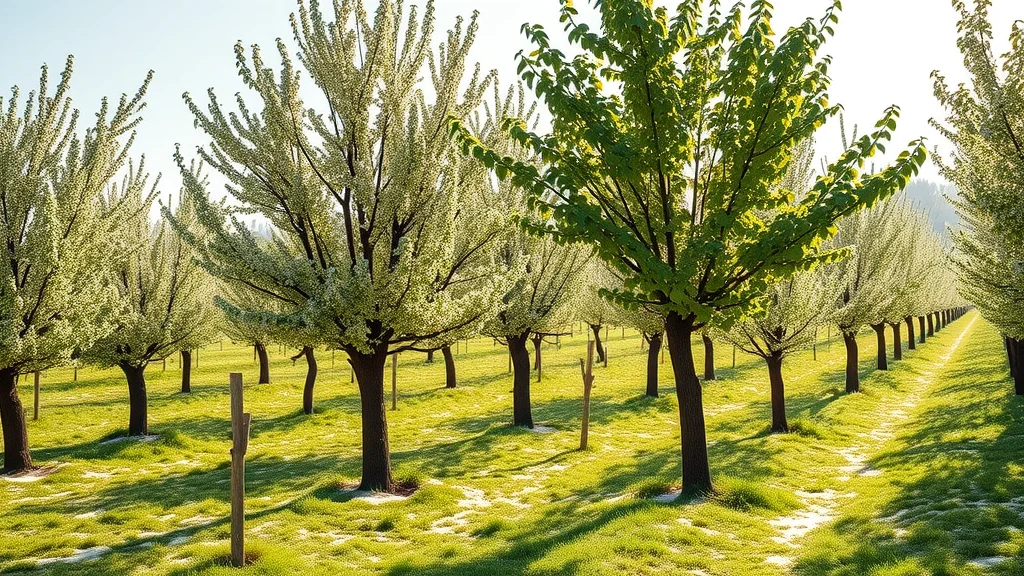
People Also Ask: Tree Insulation Techniques
How to insulate a tree?
- Use a breathable burlap wrap to gently spiral up the trunk, add a thick layer of mulch around the base (but not against the bark), and install specialized tree guards for added protection. For severe cold, supplement with frost blankets, especially for young trees and fruit trees.
What temperature is too cold for trees?
- Most trees face danger below 32°F (0°C), but young trees and fruit trees can suffer at slightly warmer temperatures if prolonged. Reference your hardiness zone for specific thresholds, and note that some species (like citrus) need protection above 40°F (4°C).
What is the best material to wrap trees for winter?
- Burlap is the traditional choice—affordable and biodegradable. Plastic tree guards offer extended use, while natural fiber blankets are best for quick, broad coverage. Match the material to your climate, tree needs, and sustainability goals.
At what temperature should I cover my trees?
- Begin covering trees any time a frost is forecast or nighttime lows approach freezing (32°F/0°C), and earlier for subtropical or sensitive young trees. Monitor conditions closely and don’t wait for visible signs of stress.
FAQs: Tree Insulation Techniques
- Do all trees require winter insulation? Most young, fruit, and newly planted trees benefit the most. Mature, native species in their optimal hardiness zone may need less protection but remain safer with mulch and spot wrapping during extreme weather.
- How do I remove insulation safely in spring? Wait until threat of frost passes, then gently unwind wraps and clear mulch away from the trunk to avoid rot. Inspect for pests or lingering damage as you go.
- Are there natural alternatives to synthetic wraps? Yes—burlap, old cotton sheets, straw mulch, and even pine boughs can insulate trees without synthetic residues.
Key Takeaways from Top Tree Insulation Techniques
- Effective tree insulation techniques combine wrapping, mulching, and guarding to defend vulnerable trees and shrubs from frost damage.
- Tailored protection by species, age, and hardiness zone is crucial for optimal tree health and fruit yield.
- Take action before freezing temperatures hit: consistent tree care safeguards your landscape investment and yearly harvests.
Ready to Protect Your Trees?
- Grow your landscaping expertise—call 203-271-7991 or visit TreeGuardianNews.com to subscribe.
Conclusion: Proactively insulating your trees is the best defense against winter damage. Prepare now to ensure vibrant, fruitful trees in every season!
To enhance your understanding of tree insulation techniques and their importance in preventing winter damage, consider exploring the following resources:
-
“Protecting Your Trees and Shrubs in Winter”: This article offers practical advice on safeguarding trees and shrubs during the colder months, including methods like wrapping trees with burlap to shield them from harsh winter conditions. (almanac.com)
-
“Wrap and Protect Your Trees with Burlap for Winter Weather”: This guide delves into the benefits of using burlap to protect trees from winter damage, providing step-by-step instructions on how to effectively wrap your trees. (westatltree.com)
By consulting these resources, you’ll gain valuable insights into effective tree insulation methods, ensuring your trees remain healthy and resilient throughout the winter season.
 Add Row
Add Row  Add
Add 

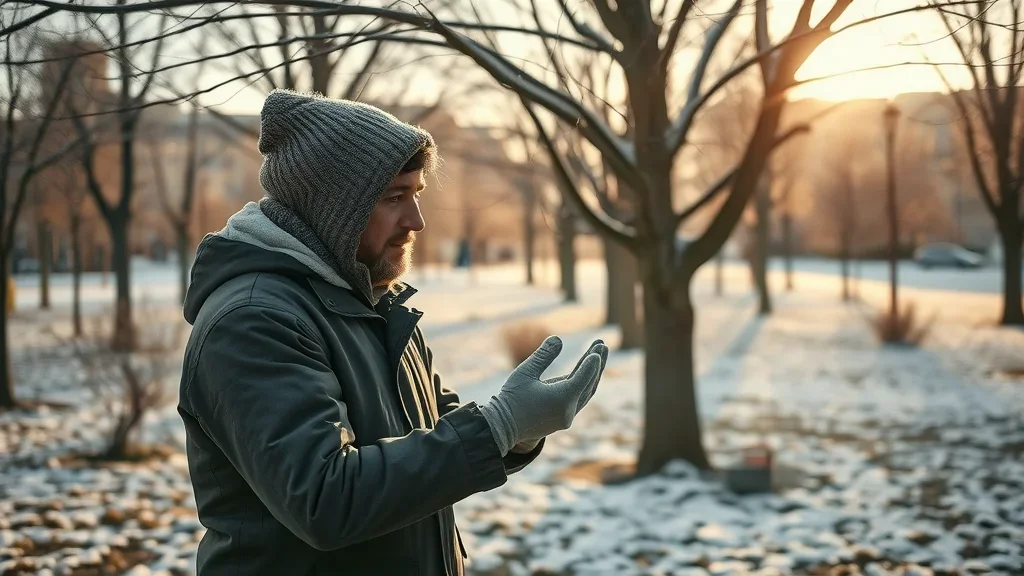
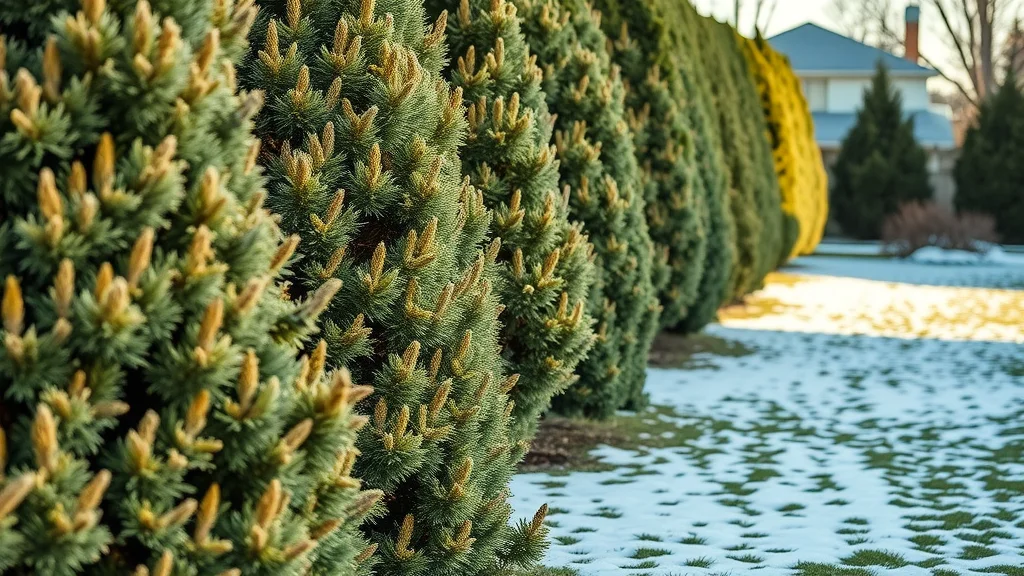
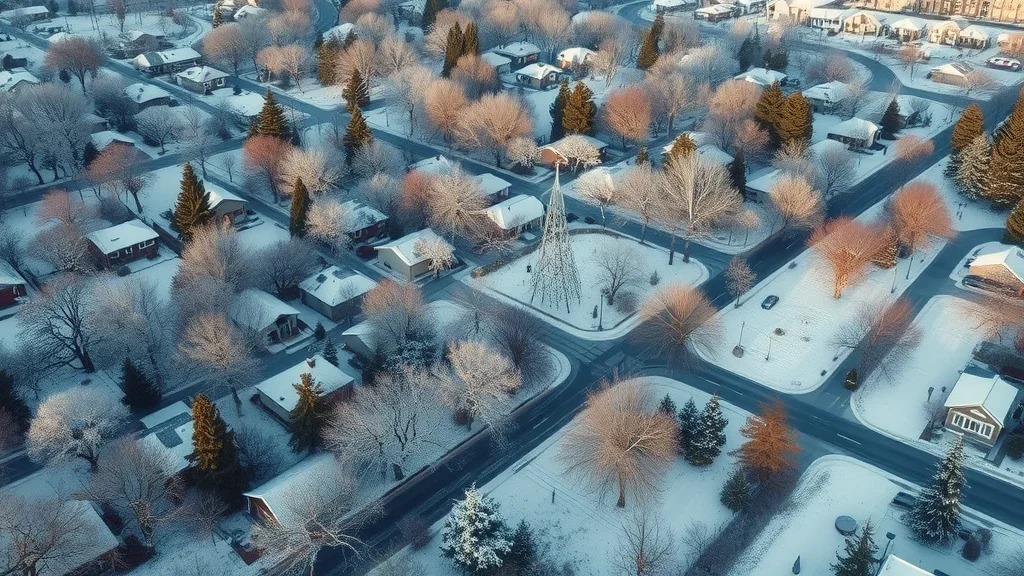
Write A Comment